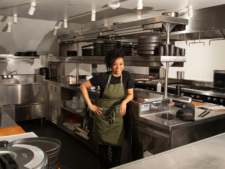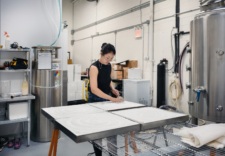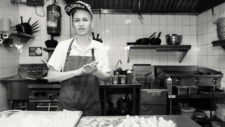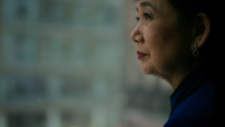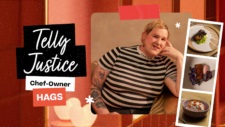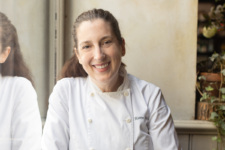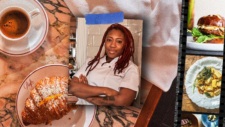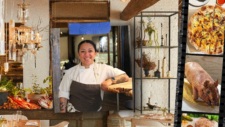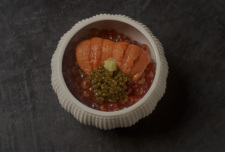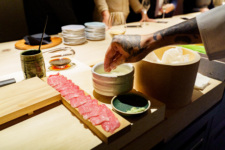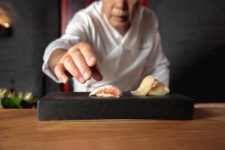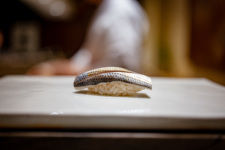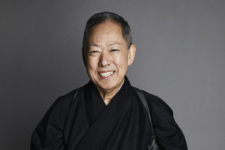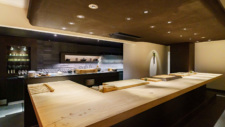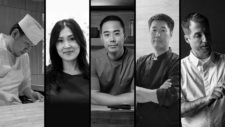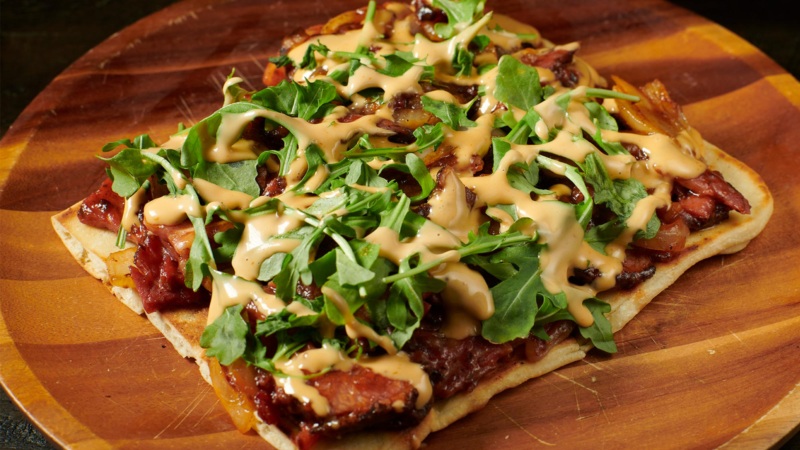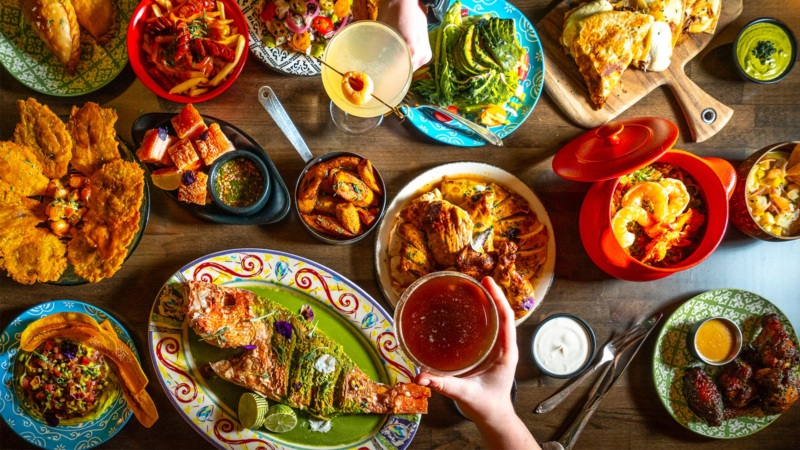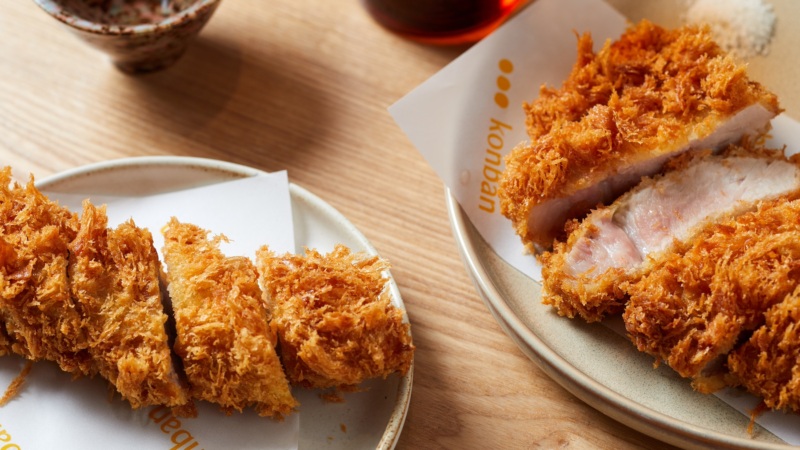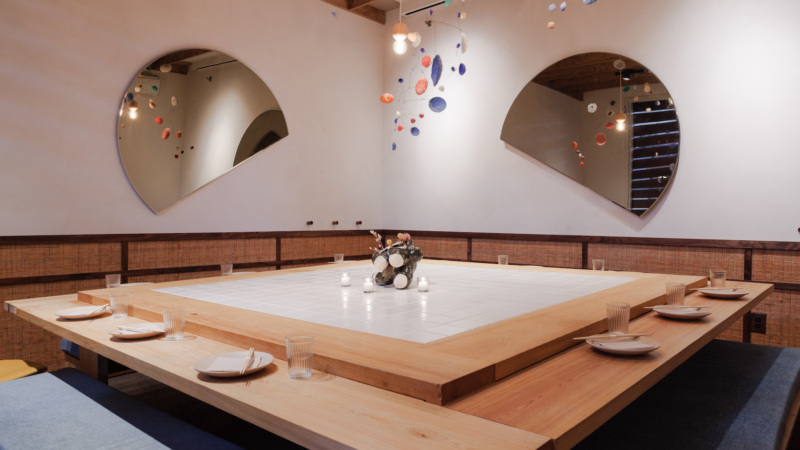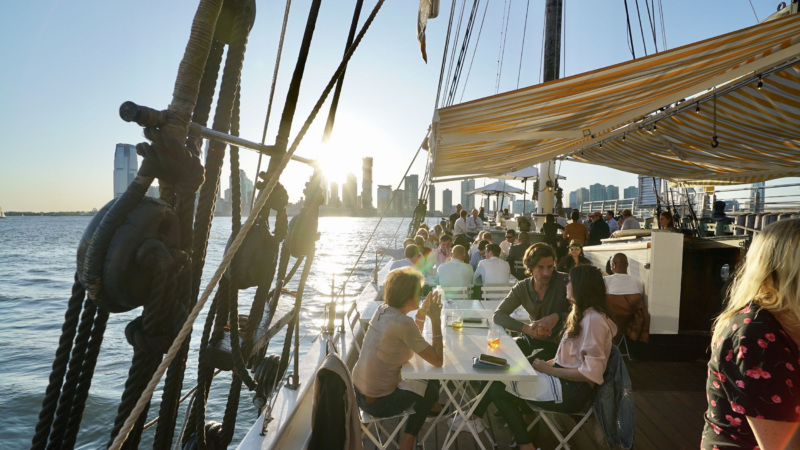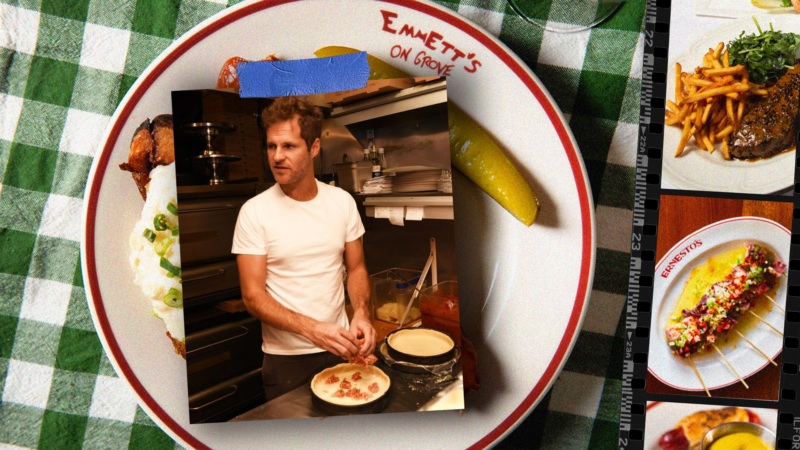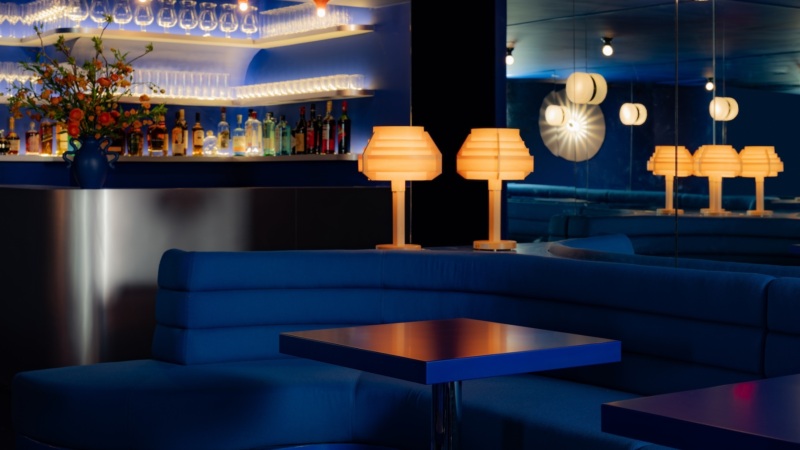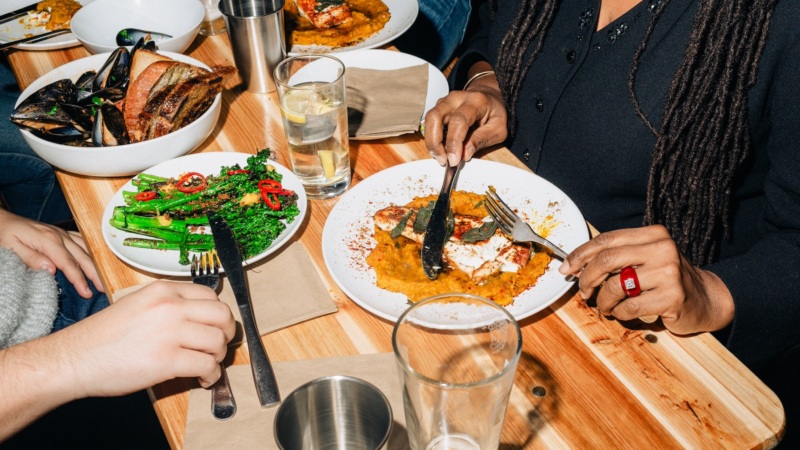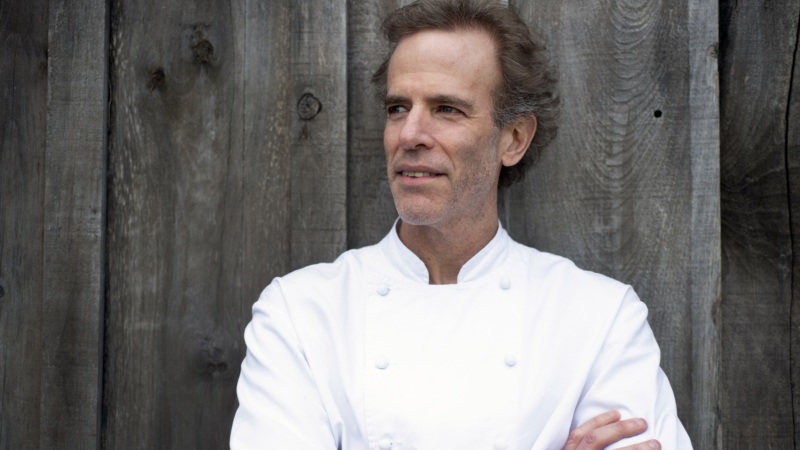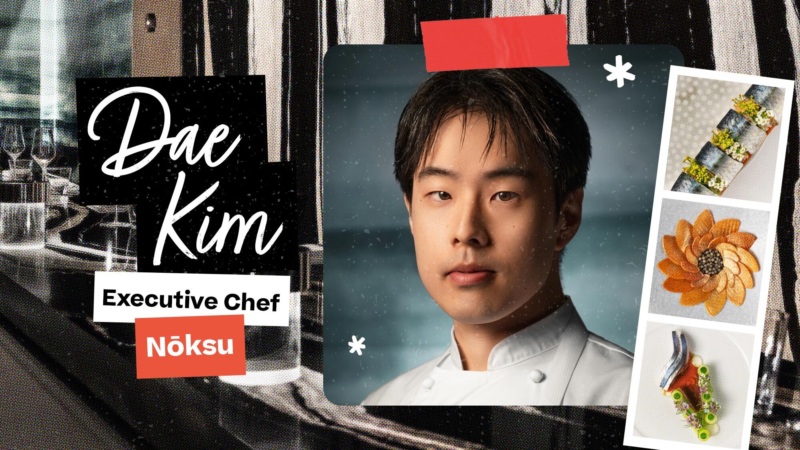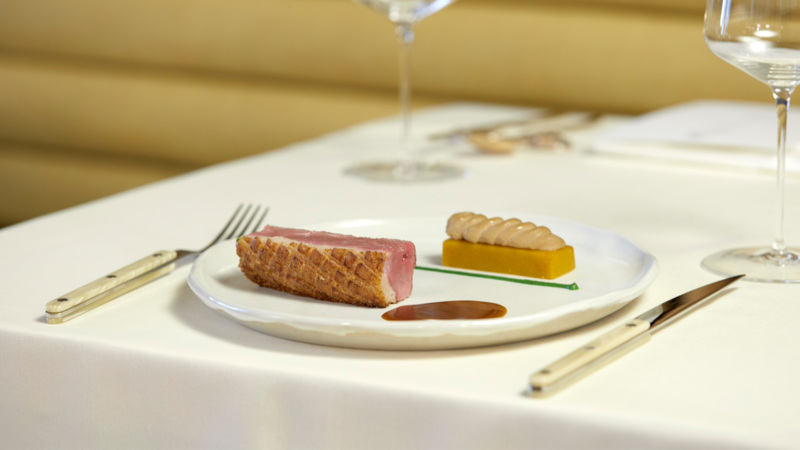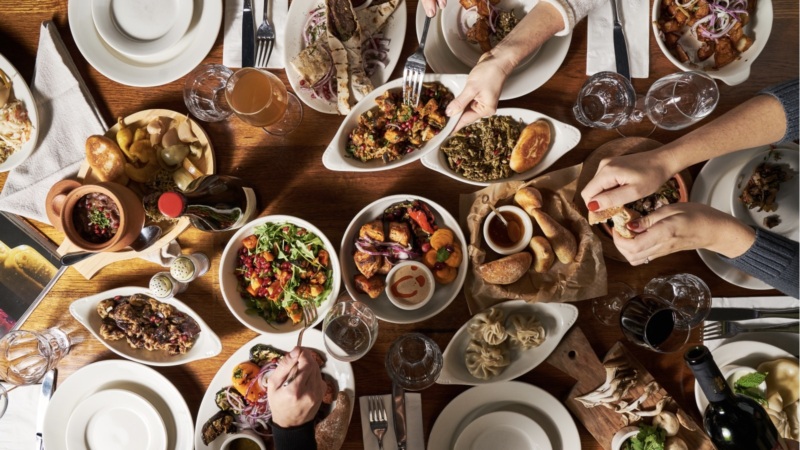
Meet the Chef Making Her Mark in New York’s Male-Dominated Sushi Scene
The phrase “hidden gem” might be a tired cliché, but in the case of Hoseki it feels almost cheekily literal. For one, this curving six-seat sushi counter is pretty well hidden, tucked away behind a velvet curtain on the basement floor at Saks Fifth Avenue in New York.
It sits surrounded by cases of sapphires and diamonds from the likes of Chopard and Bulgari at The Vault, Saks’ glittering subterranean jewelry section accessed by a Rem Koolhaas-designed escalator. Hoseki has its own jewel-like elegance, too, from its plush deep-emerald stools to the glistening petals of beautiful fish presented gem-like on speckled-green hand-blown glass pedestals. But while in Japanese Hoseki means “jewel,” its $95 omakase prix fixe is a relative steal given the quality — and certainly the most affordable treat at The Vault.
Maxwell Weiss, founder of the in-home omakase service, Ten Homakase, opened Hoseki last summer with the idea of providing quality sushi to Midtown shoppers in under an hour. In Japan, sushi and shopping are a natural pair; almost every depato (department store) has at least one sushi-ya. Weiss brings a distinctly American sense of place to this concept, with New Yorker magazine covers and framed fashion illustrations on Hoseki’s gallery wall, and a gleaming white Corian counter instead of pale wood.
Gracefully wielding the knife and elegantly molding the rice while confabbing with guests is sushi shokunin Morgan Adamson: blond, aged 30, full of Midwestern charm and enthusiasm and shattering all the macho stereotypes about the profession.
Adamson won’t serve you technicolor American maki rolls, however, or sashimi with gimmicky sauces and toppings. Her 12-course omakase features elegant nigiri pieces starring fish like madai (sea bream) accented with truffle salt, luxurious shima aji (striped jack) highlighted with housemade soy sauce, silky bluefin tuna from Spain, and plush Hokkaido scallops flourished with finger lime “caviar.”
Recently, Resy caught up with Adamson to talk about being a woman in this male-dominated field, customers’ assumptions about her, the secrets of the sushi trade, and Hoseki’s place in New York’s increasingly crowded omakase landscape.
Resy: Tell us about your background as a chef and how you first experienced sushi.
Morgan Adamson: I’m from Battle Creek, Mich. I worked in restaurant kitchens there and always loved it, but it’s not really a career choice in my home town. Then I got an opportunity to work as a sushi chef at a Korean Japanese fusion restaurant in Kalamazoo, which didn’t really have a big culinary scene either. Looking for other opportunities, I saw a job opening in New York, at an omakase restaurant called Kissaki. So, I applied. I was naïve! I thought “Oh, I know sushi!” I kept writing and not getting any response. I even sent pictures of myself slicing fish. Finally, they called me, and we had some phone and video interviews. Then they flew me out to New York. I had to do a demo on the line in the kitchen. It was so intimidating: all these men watching me and probably wondering what I was even doing there. But I got hired! And I worked at Kissaki for two-and-a-half years.
How does one learn the sushi craft? In Japan there’s this system of rigorous apprenticeship, where you have to do things like wash rice for 10 years before you’re even allowed to touch fish. How was it for you?
In this country, I don’t think there’s a standard training system. It’s often about watching other chefs. I did have a Japanese chef train me at Kissaki, and he wasn’t always gung-ho to show me things right away. Yes, I wasn’t allowed to touch fish for a while. Yes, I was doing the rice, and the chef would taste it to make sure it was how he liked it. Or he’d just watch me and show me without doing much talking. After a while, he had me watch him slice fish. Before I was allowed to slice it, though, I had to present his plated sushi to customers and explain all the fish.
After a few months, I was finally allowed to start slicing my own fish which, of course, I already knew from my work back in Michigan. And everyone has their own style anyway. It’s something you can learn only by doing.
My learning period probably wasn’t nearly as long as it is in other places. Certainly nothing like in Japan. Maybe that’s because my boss was eventually like, ”We’re paying her to be here. We’ve got to get her doing something.” So I think I was lucky in that way. Washing rice for 10 years? How much do you have to pay someone to do that? And who’d stick around for that, for 10 years?
Sometimes people are like, ‘Oh, we have a female sushi chef, and it’s maybe a positive thing.’ Others will go, ‘Oh … and why are you here?’
Customers only see sushi chefs slice the fish and shape the rice gracefully. What are some difficult things about the profession people might not know about?
Butchering whole fish, for instance, can be really hard on your hands: Trying to break through the bones, and handling fish that can be so heavy and slippery. There’s a certain way you have to hold the fish, to be gentle while breaking through the tough bone. It makes your wrists sore. People don’t realize how physical this work can be. Shaping rice balls, yeah that’s a whole skill. But that’s the easy part, to be honest.
You also deal with the suppliers, who might not always be willing to sell you the highest-grade fish if you’re not a big-name customer placing big orders. So, you learn how to get creative to get what you want. So much in this business is about looking people in the eye and shaking lots of hands.
Anything else you found challenging personally?
Just being in front of people [at the sushi counter] can be really really great — or really uncomfortable. If customers are happy to be there and excited to see you and want to chat, that’s wonderful. But there are those who kind of pick you apart. But I guess it just comes with the territory. You’re on display and people will have comments to make, and some people will make them to your face.
Sometimes people are like, “Oh, we have a female sushi chef, and it’s maybe a positive thing.” Others will go, “Oh … and why are you here?” They’ll question your credibility, which I understand; there are so many cultural things going on behind this cuisine.
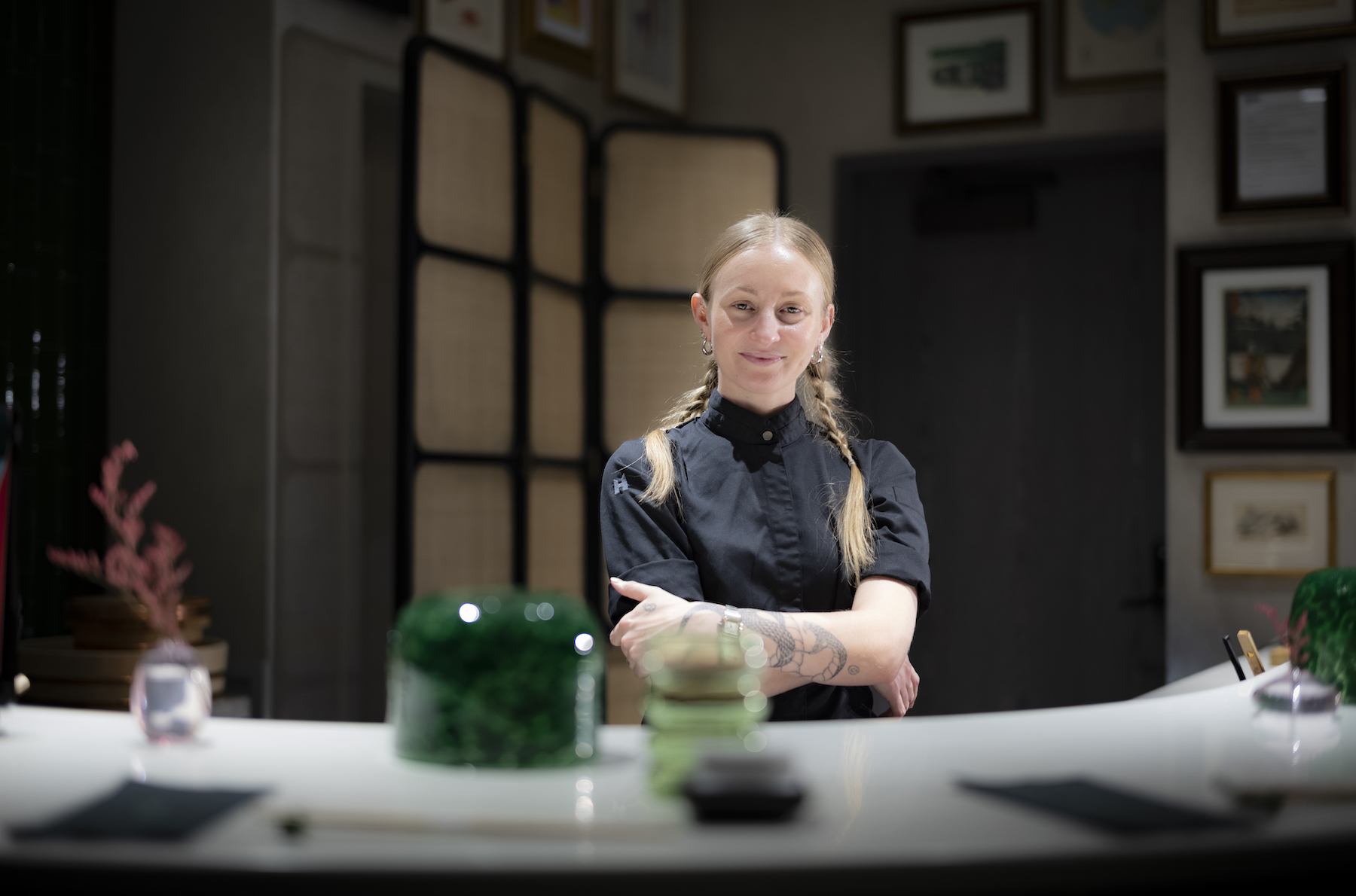
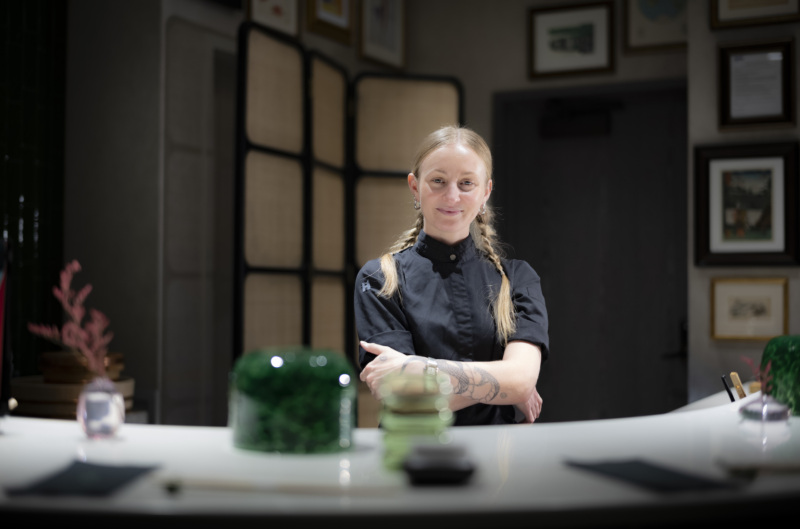
Indeed! You break every sushi shokunin stereotype: You are a woman, young-looking, and obviously not Japanese. So how do you deal with it?
Well, being from the Midwest, polite is what we do, so I think I’ve mostly been shocked when people say something negative. And I wish sometimes I could be quicker and snappier. But instead, I try to be nice. And I’m happy as long as people are eating the food. If the food is so bad they can’t eat it, that would be one thing. But hopefully they’re realizing that “Oh, maybe someone who looks different can still make great sushi.”
What are some of the negative things people might say?
Mostly it’s people making instant assumptions. But that’s not a crime. But for instance, when I was working on the line at another restaurant, there was this new [male] chef who had asked to watch how I did things. When he walked away the guest was like, “Oh, is your boss checking in on you?” And I said, “It’s just his second day here, actually.”
But honestly, I can be mansplained till the sun rises by colleagues. It doesn’t bother me as long as I learn something.
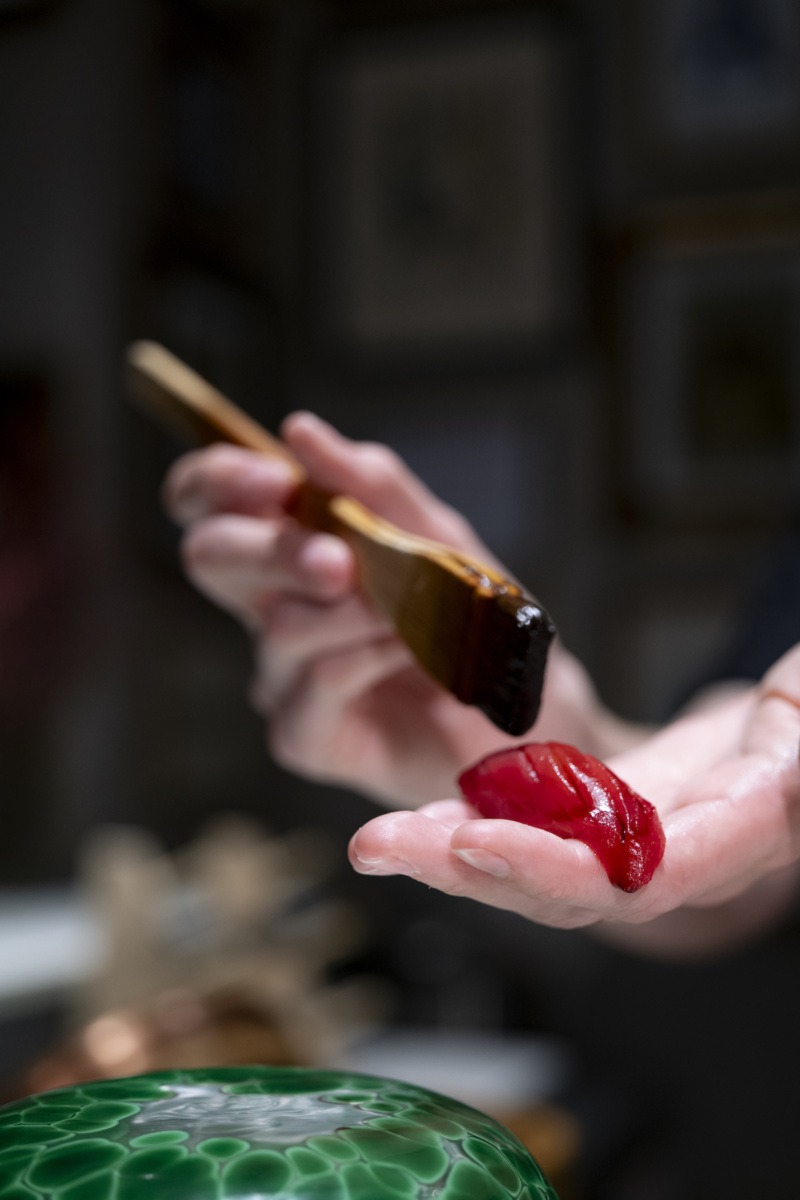

Talking about gender stereotypes, in Japan there’re these sexist myths that a women’s body temperature is too warm for handling fish, or that you can’t do it when you have a period. But female sushi chefs are on the rise in Japan, as well as here. Thoughts?
The body temperature thing is just made up to keep people down. I think I read somewhere that women actually have a lower body temperature than men. It’s just a gatekeeping tactic. Like that supposed rule about having to wash rice for 10 years.
But there are more of us in the business these days. I have female colleagues both in New York and elsewhere in the country. We have a lot of similar stories to share and compare. We are constantly supporting each other on Instagram.
Omakase is a crowded field in New York. What makes Hoseki stand out?
Yes, there’s a lot of affordable quick omakase these days in the city. But there aren’t many places doing it our style, where it’s just one chef — just me! — doing everything from sourcing to taking care of ingredients to slicing and serving. Having this much to control can be a lot, but I really care and hope it shows in the quality.
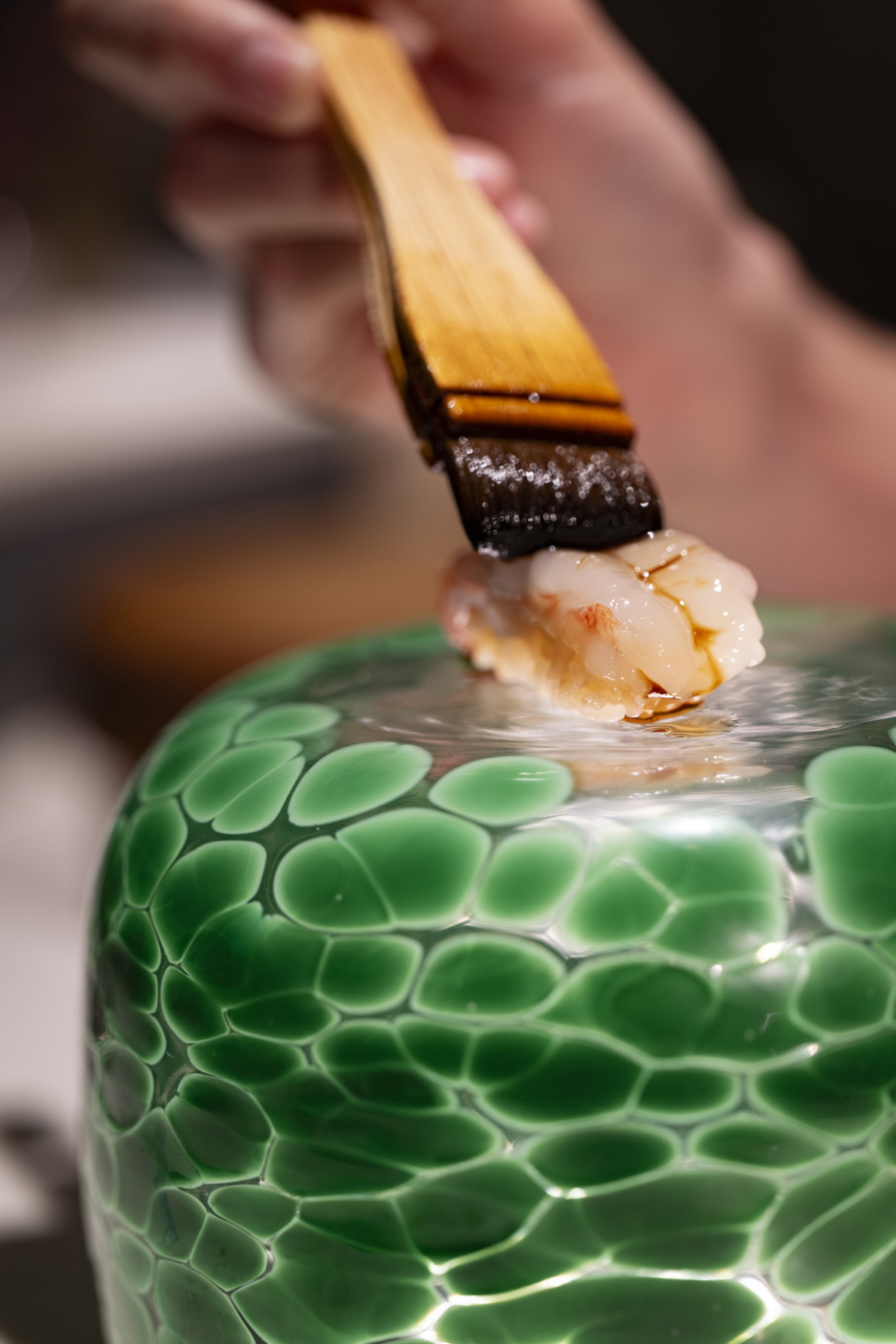
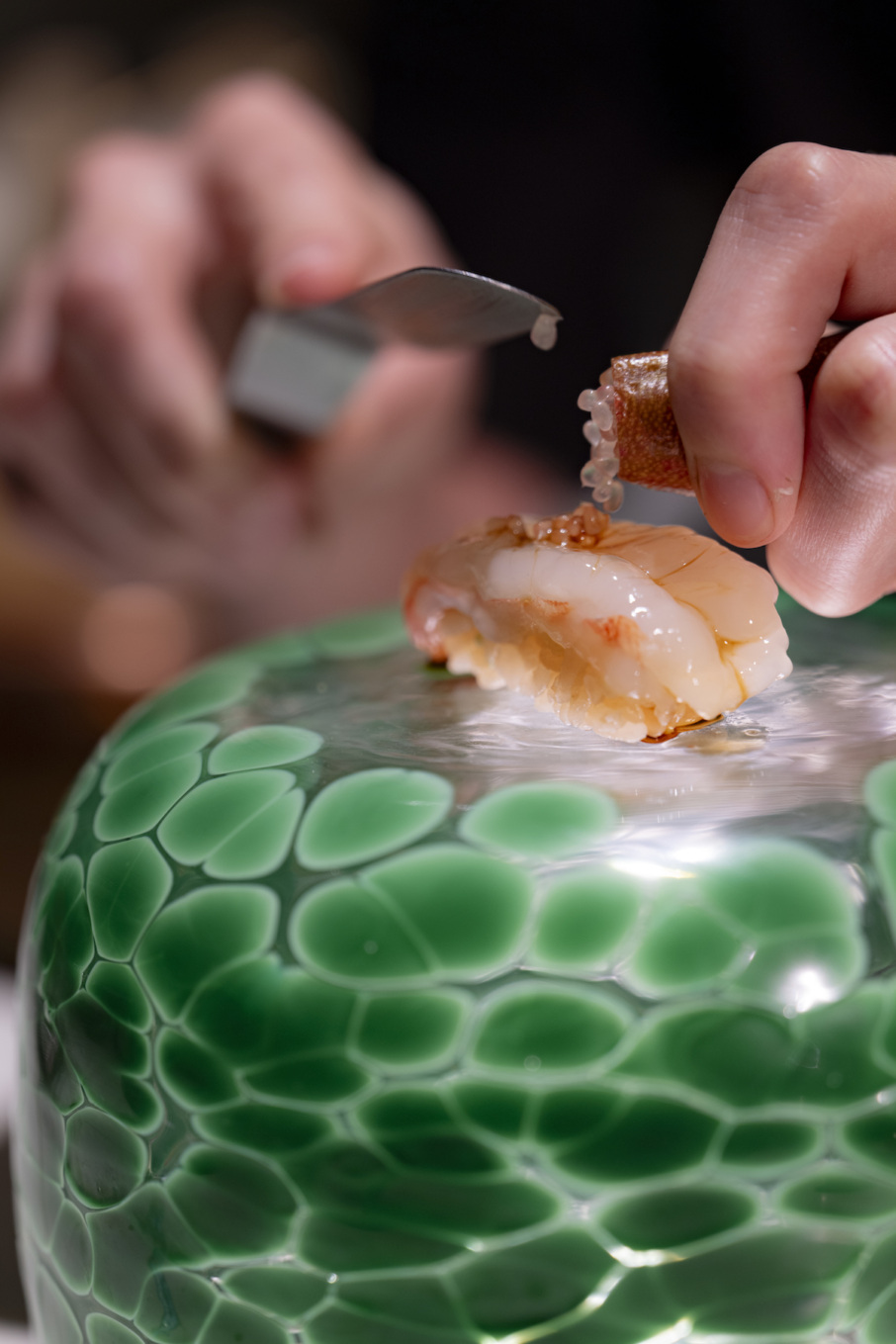
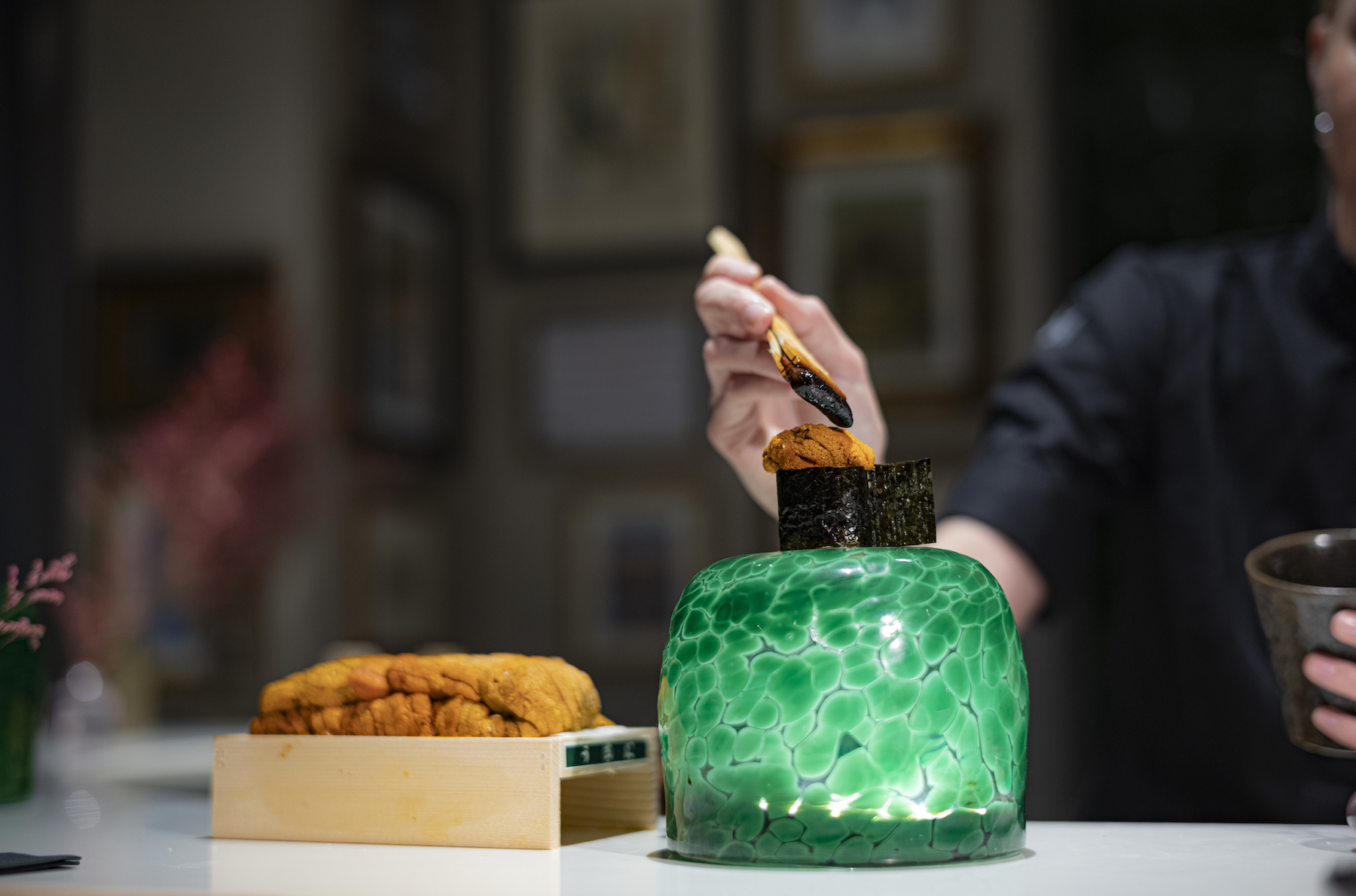
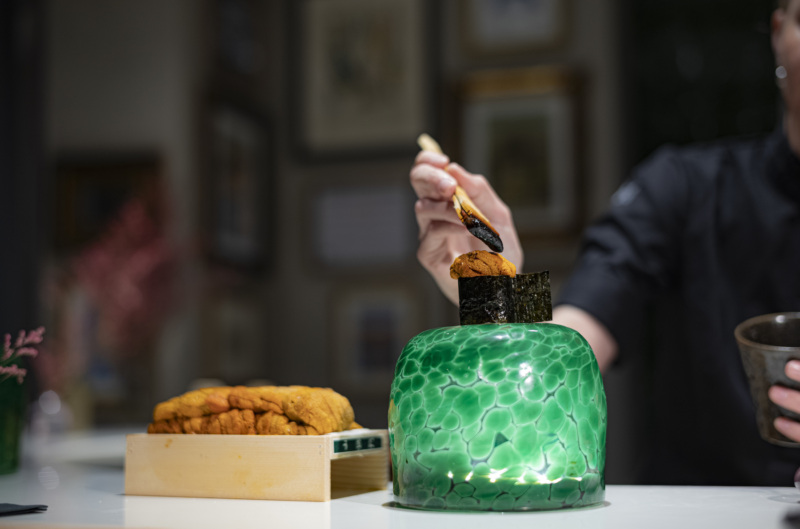
Anything regarding your current menu you’re particularly excited about?
I’m excited about the kombu kelp curing, the technique of slightly aging fish between layers of seaweed. Also, about finding ways to manipulate the fish slightly, through marinating for instance. And finding special ingredients, like this amazing fluke from Montauk that we use, or the incredible Hokkaido scallops. Or the kamasu (barracuda) when I can get it in season. It’s a small fish that comes with skin on, and you torch it for a light smokiness. Customers are delighted to get something beyond the usual salmon or tuna.
Our rice is special, too. Typically, you mix it in advance with the seasonings and store it. I cook a fresh batch for each seating, and use different vinegars. A couple of lighter sweeter vinegars for certain fish; a red aged one for fattier fish towards the end of the tasting menu — it’s an homage to my chef at Kissaki who used this rare artisanal vinegar. And of course, we make our own special soy sauce.
Tell us about the different seasonings for your fish.
I love salt. And I love working with special female vendors who are so into what they are doing. One of my female sushi chef friends recommended this woman named Makiko-san who has a company, called Glamsalt. Makiko-san says that in Japan, people believe salt wards off evil and brings in good things. It has medicinal and spiritual properties. We use 10 different salts of hers for my seasoning. Not on every single piece of course, and depending on fish.
And those beautiful glass pieces on Hoseki’s counter?
My grandfather is 82 and he blows glass, so he made these podiums for the nigiri pieces. He is so special! And he’s from Michigan!
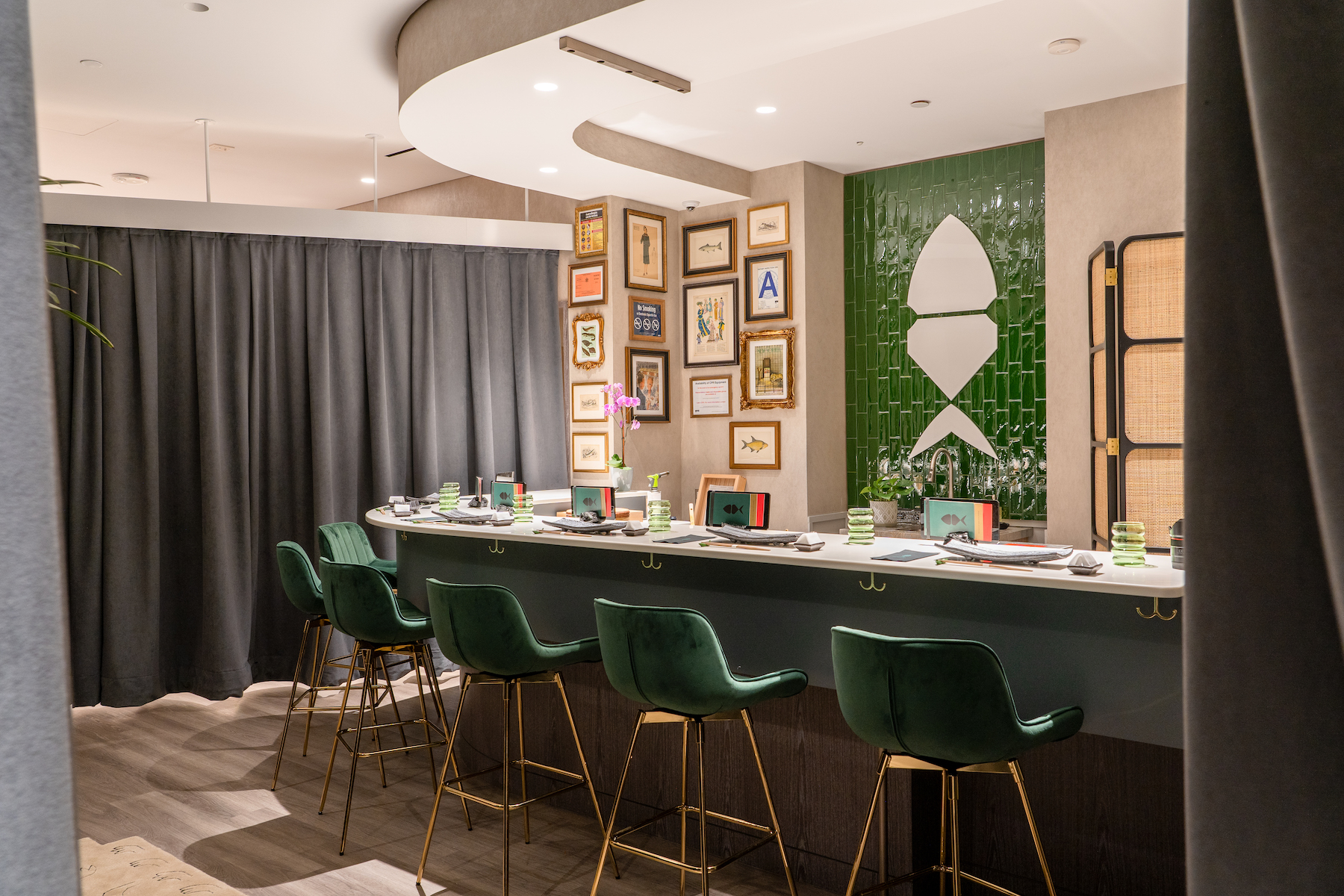
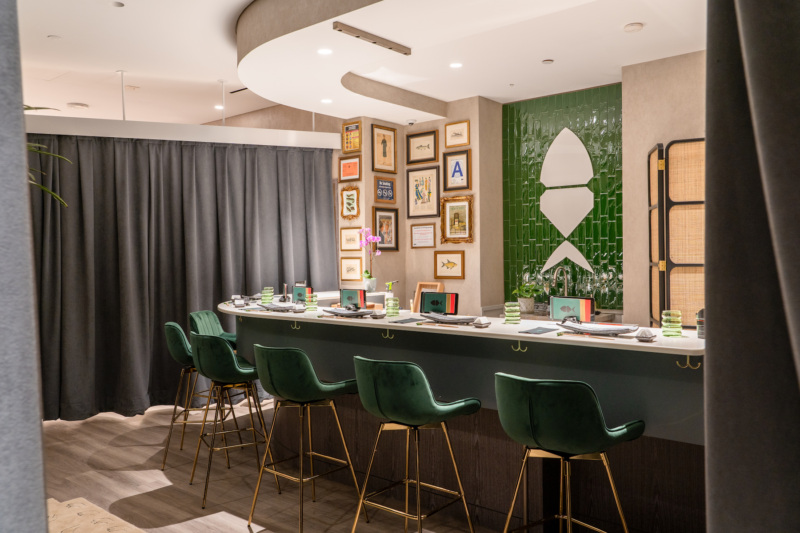
Omakase at the counter is an interactive experience. But there’s so much etiquette! So many sushi chefs get upset for example when customers drown their delicate fish pieces in soy-wasabi mixture and top it with gari (pickled ginger).
Well, that’s why we don’t serve soy sauce here. Some of the pieces I season myself, if the fish needs it. But all these omakase rules can be intimidating. We’d rather have people enjoy themselves.
Here I have just one hour to interact with my customers. Some want to chat, others don’t. I want to give them a good experience, but still be myself. I love when people talk to each other and with me. I like hearing about their experience at other omakase spots too — unless of course they say bad things about colleagues or friends. Personally, I’d rather hear my customers’ stories than tell my own at every seating. Although I understand people’s curiosity, sure.
New York has many hyper-expensive omakase places and lots of super-affordable ones — with not that much in between. What drives the price? What justifies a $750 price tag? Is it just fame and mystique? There’s so little transparency in the high-end sushi world.
It can be hard to understand how the famous spots work but they have way more money to spend on the fish. Within the same uni or toro, for instance, there are different grades, and the top places can snap up the best. Me, I love nodoguro [blackthroat sea perch] but on a $95 omakase we can’t always afford it. Just every once in a while. At the high end you’re also paying for the beautiful space, for all this Japanese hinoki wood. Also, while these spots might be named after one head chef, they have lots of people doing all these tiny tasks that make the whole thing special. Just like at any three-star Michelin restaurant.
So why isn’t there a lot of middle ground in the city between really affordable and crazy-expensive?
Middle-ground places have a really hard time staying afloat. People who can afford a $900 omakase will always have money, I guess, and the really cheap places, well, there’ll always be a McDonalds. Middle-ground places are continuously pressured to lower their prices, to come up with specials and gimmicks just to fill their spaces.
But a lot of omakase eaters in this city are smart and experienced. It’s hard to impress them with some gold flakes scattered on sushi. You have to be sincere with what you offer, and that’s what I try to do here. And listening to what customers say, like “Oh I’ve never had this fish before.” We try to give guests a special experience without being over the top.
Any thoughts on sushi culture in New York generally? Where is it going? Is it sustainable?
Competition is always good for business. There are so many chefs I look up to, so much excitement and talent. Sure, it’s a crowded field, and yes we’re just one more new spot. In the end, places that are part of the cash grab might start dropping out. But places that genuinely care about the craft and ingredients will hopefully survive and stand out.
Any sushi trends you see emerging?
I myself want a dry-ager. Toppings were big for a while but now things are more simple. At the same time customers don’t just want a slice of fish on rice; we can do more than that.
Any final thoughts about being a woman in this male-dominated world of sushi?
Women in sushi push themselves so much just to prove they’re worthy of even being a part of the conversation. Yes, maybe it’s not common for chefs like myself to do so much and it might be totally crazy but I feel like I need to be doing more. Men in this profession are handed the credit; women have to work that much harder to earn it. Some female sushi chefs come and go because they have worn themselves out completely, and I’m trying to be mindful of that. But who is going to give me credit if I don’t push myself harder? I don’t want to just be “the cute girl that’s making nigiri pieces” — and people going like “Oh that’s so cute that she does that.” I want more.
Hoseki is open Wednesday through Sundays from noon to 4 p.m.
Anya von Bremzen is a James Beard Award-winning book author and journalist based in Jackson Heights, N.Y. Her latest book, “National Dish,” was published last year. Follow her on Instagram. Follow Resy, too.



